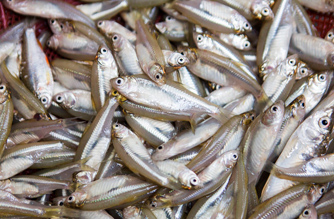DHAKA, Feb 23, 2019 (BSS) – The farming of vitamin A-rich mola species in the
ponds of Bangladesh greatly improves the nutritional quality of the other
fishes without affecting the growth of the carps, says a new report of the
Food and Agriculture Organization (FAO).
“Mola breed in the pond, and the frequent harvesting of small quantities
favours home consumption. Production of only 10 kg of mola, per pond, per
year in the country, where there are estimated 4 million small seasonal
ponds, could meet the annual recommended fish intake of 6 million children,”
the report reads.
The report titled ‘The State of the World’s Biodiversity for Food and
Agriculture’ released on Saturday reveals that small fishes make up 50
percent to 80 percent of the total fish intake of the local population in the
peak fish-production season.
“Although they are consumed in small quantities, the frequency of small-
fish intake is high. As many species are eaten whole – complete with head,
viscera and bones – they are particularly rich in bioavailable calcium, and
some are also rich in vitamin A, iron and zinc,” the report said.
Citing the findings of many studies and field trials conducted in
Bangladesh with carps and small fish species in pond polyculture, the FAO
report reveals the presence of the small, native and vitamin A-rich mola
carplet significantly improves the nutritional quality of the total fish,
without affecting the growth of carp fishes.
The FAO suggests there is scope for agricultural policies and programmes
to promote the production of micronutrient-rich small fish in the areas where
suitable fish resources are available and fish is consumed on a regular
basis, and thereby increase people’s fish consumption and improve their
nutrition and health.
Successful trials with the polyculture of small and large fish species have
also been conducted in rice fields and wetlands and that is why the approach
has the potential to be widely implemented.
“However, to fully realise its potential to improve nutrition, further data
are needed on nutrient bioavailability, on intrahousehold seasonal
consumption and on cleaning, processing and cooking methods for small fish
species,” the report says.



